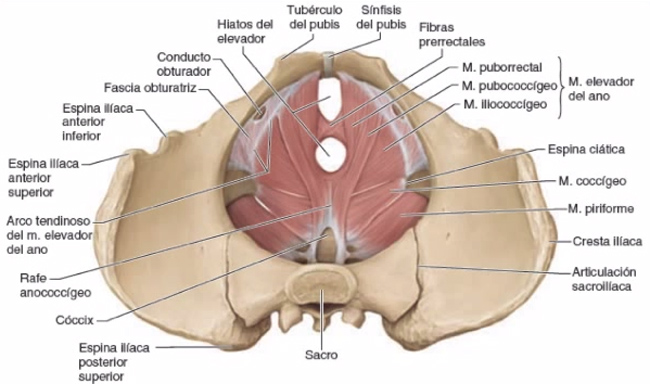Kegel exercises
What are Kegel excersices?
Kegel excersices – self care
Kegel exercises help strengthen the muscles under the uterus or bladder (pelvic intestine). Doing Kegel exercises can help you control or prevent physical problems such as incontinence. Incontinence is the leakage of urine or feces that cannot be controlled. Kegel exercises help women with urinary incontinence. Frequently related conditions:
People with brain and nerve diseases can also experience issues with urine leakage or bowel control.
What are Kegel excersices?
They were developed by Dr. Arnold Kegel in the 1940s and consist of the voluntary contraction of the muscles of the pelvic floor; namely, the muscles surrounding the urethra, the vagina, and the anus, aiming at strengthening them and this way, improving the malfunction leading to urinary incontinence. These contractions are the ones that take place, for example, when resisting the need to urinate when there is no bathroom nearby or when trying to stop the passing of gas. When doing this, you should feel as if the urethra, the vagina, and the anus closed and ascended. Additionally, the benefits of Kegel exercises are multiple and for all people, for women as well as for men.
How to do Kegel excersices
To do Kegel exercises, you just have to squeeze the muscles of the pelvic floor. The part of your body where the hips are located in the pelvic area.
In the lower part of the pelvis, different muscle layers stretch between your legs. The muscles are attached anteriorly, posteriorly, and laterally to the iliac bone.
Kegel exercises are designed to strengthen the muscles of the pelvic floor. These are the muscles that support your bladder and help avoid urine leakage.
Strengthening the pelvic muscles with Kegel exercises can help with bladder control and thus with urinary incontinence
Appointment with the specialist
How to do exercises with the pelvic muscles
Find the right muscles. Try one of the following ways to find the right muscles to contract.
Imagine you are trying to stop the passing of gas. Squeeze the muscles you would use. If you feel a pull, you are contracting the right muscles for pelvic exercises.
Imagine you are sitting on a marble and you are trying to pick it up with your vagina. Imagine you suck the marble into the vagina.
Lay down and introduce a finger into your vagina. Squeeze as if you are trying to hold urine. If you feel the skin around your finger tighten, you are contracting the right pelvic muscles.
Let your doctor, nurse, or therapist help (remember you can ask for these professionals to be women). Many people struggle with finding the right muscles. Your doctor, nurse, or therapist can determine if you are doing the exercises correctly. You can also do the exercises with special weights or biofeedback. Ask your health care team about these aids to do the exercises.
Do not squeeze other muscles at the same time. Be careful not to contract the abdomen, legs, or other muscles. Contracting the wrong muscles can increase the pressure on the muscles for bladder control. Only squeeze the pelvic muscles. Do not hold your breath.
Repeat the exercises, but do not overdo them. In the beginning, find a quiet spot where you can practice, such as the bathroom or bedroom, so you can concentrate. Lay on the floor. Contract the pelvic muscles and hold them that way counting to 3; then, release the contraction counting to 3. Do 10-15 repetitions each set. Use the exercise diary at the back of this form to keep track of your sessions.
Do the pelvic exercises at least 3 times a day. Every day, use three positions: laying down, sitting, and standing up. You can do the exercises laying on the floor, sitting at a desk, or standing in the kitchen. If you use the three positions, muscles will get stronger.
Be patient. Do not give up. It just takes 5 minutes, three times a day. You might not notice any improvement in your bladder control for 3 to 6 weeks. However, most women notice improvement after a few weeks.
Source: Medline Plus: US National Library of Medicine.
How to identify the muscles of the pelvic floor
If you are unsure about which are the muscles of the pelvic floor, there are some ways to identify them:
Imagine you are peeing. Contract the muscles you would use to stop the urine stream. Do not practice stopping the urine stream for real, especially if the bladder is full. In fact, this can weaken the muscles and can make the emptying of the bladder incomplete, which increases the risk of a urinary tract infection (UTI).
Contract the muscles you use to stop defecation or prevent the passage of gas, but do not squeeze the glutes (buttocks), the abdomen (core), or the lower part of the thigh. If you do it correctly, the body should not lift at all. If you notice that the body is lifting a little, you may be using the muscles of the buttocks.

Place a finger or a vaginal dilator inside the vagina, then contract the muscles of the pelvic floor around the finger or the dilator. You should feel the vagina tense and the pelvic floor move upwards.
What to do if you continue to have pelvic pain and incontinence
If once you do the Kegel exercises you continue to have issues with pelvic pain or incontinence, schedule an appointment or contact your healthcare provider who specializes in pelvic health. They can analyze the causes of the pain or the issues in the zone of the muscles of the pelvic floor. You can also ask to be derived to our specialists in Valencia, Spain if you are looking for orientation or help with vaginal dilation therapy or if you have issues with Kegel exercises, filling out the form, and contacting us through one of the available channels.
Gynecologic and sexology educational content, to improve the quality of life of women in different stages of their life cycle.

Contact your personal doctor or healthcare professional if and when:
- You feel pain when doing Kegel exercises.
- You cannot do Kegel exercises right.
- You have doubts about the bladder sex organs function in women.
- You experience pelvic pain.
- You want help with vaginal dilation.
- You want to be referred to a physiotherapist specialized in pelvic health.
Tell us what you think about our service
Your opinions will help us improve the information we give to patients.
Learn more in our Blog dedicated to women’s health
Gynecology / Oncology
Request a Second Medical Opinion
Frequently Asked Questions About Kegel Exercises
What can cause pelvic pain?
Pelvic pain can be a sign that there is a problem with one of the organs in the pelvic region, such as the uterus, ovaries, fallopian tubes, cervix, or vagina. Consult your specialist gynecologist who will be able to diagnose the appropriate treatment.
Where is the pain located in the pelvis?
Pelvic pain is localized pain in the lower abdomen that may be due to some acute or chronic alteration in the aforementioned organs or be a pain transmitted from another area of the body.
How do I know if I have an inflamed pelvis?
- Pain in the lower abdomen;
- Fever;
- Unusual, foul-smelling vaginal discharge;
- Pain or bleeding during sexual intercourse;
- Burning sensation when urinating; either.
- Bleeding between periods.
What is the female pelvic area?
In women, the pelvis contains two ovaries and two fallopian tubes (left and right), the uterus, bladder, rectum, and vagina.
Kegel Exercise Patient Testimonials
Doctor Lucas Minig Specialist in Kegel Exercises in Valencia, Spain
WE WORK FOR YOUR HEALTH

SPECIALIZED TREATMENTS

CONTROL Y DIAGNOSTICO

MAXIMUM TECHNOLOGY

Contact Us
Leave us your data and consultation to offer you personalized medical advice
International Consultation
If you want remote medical care, you can consult
through the following links:
International Appointment
Online Consultation
Whatsapp: + 34 679 112 179









